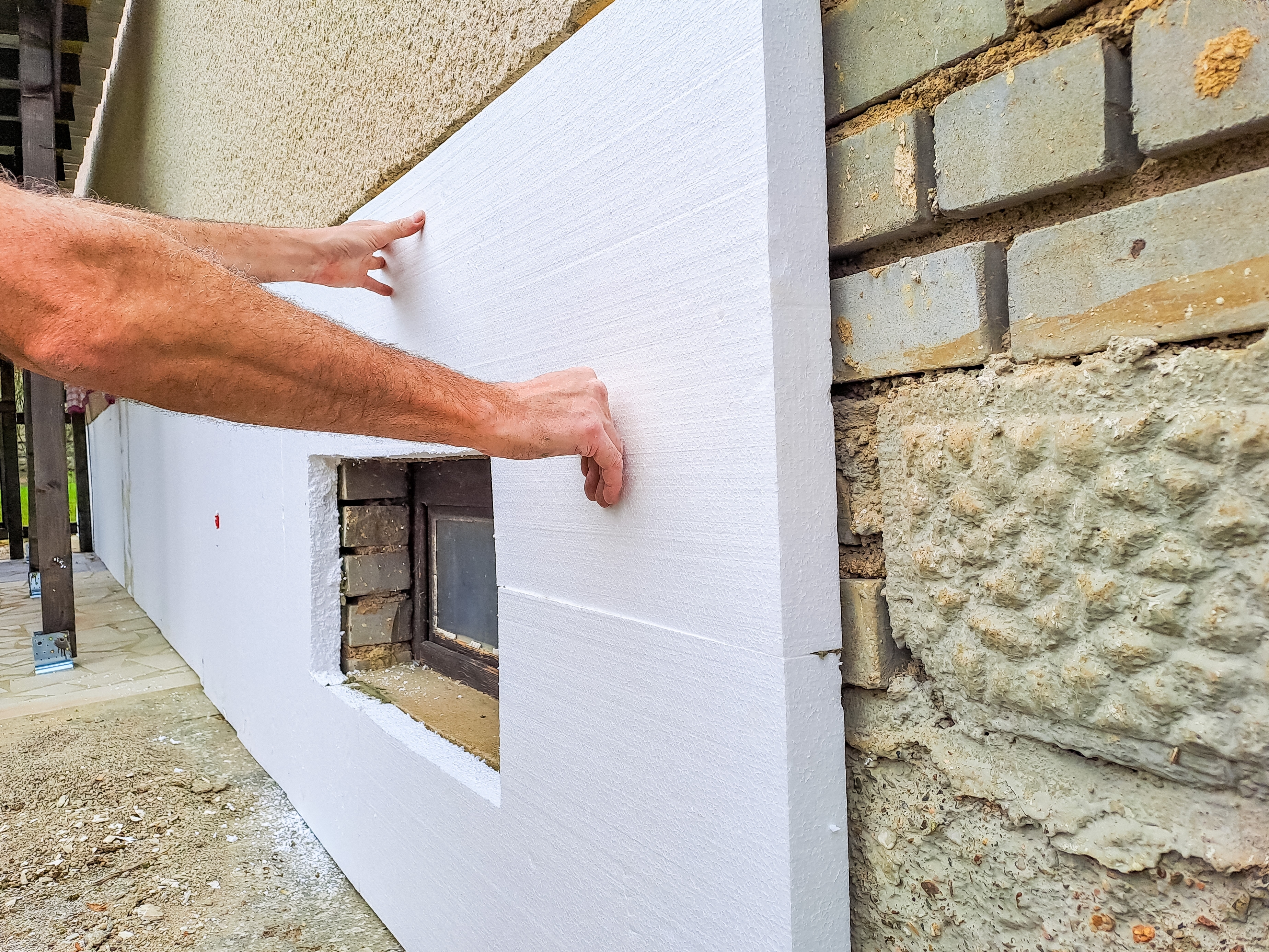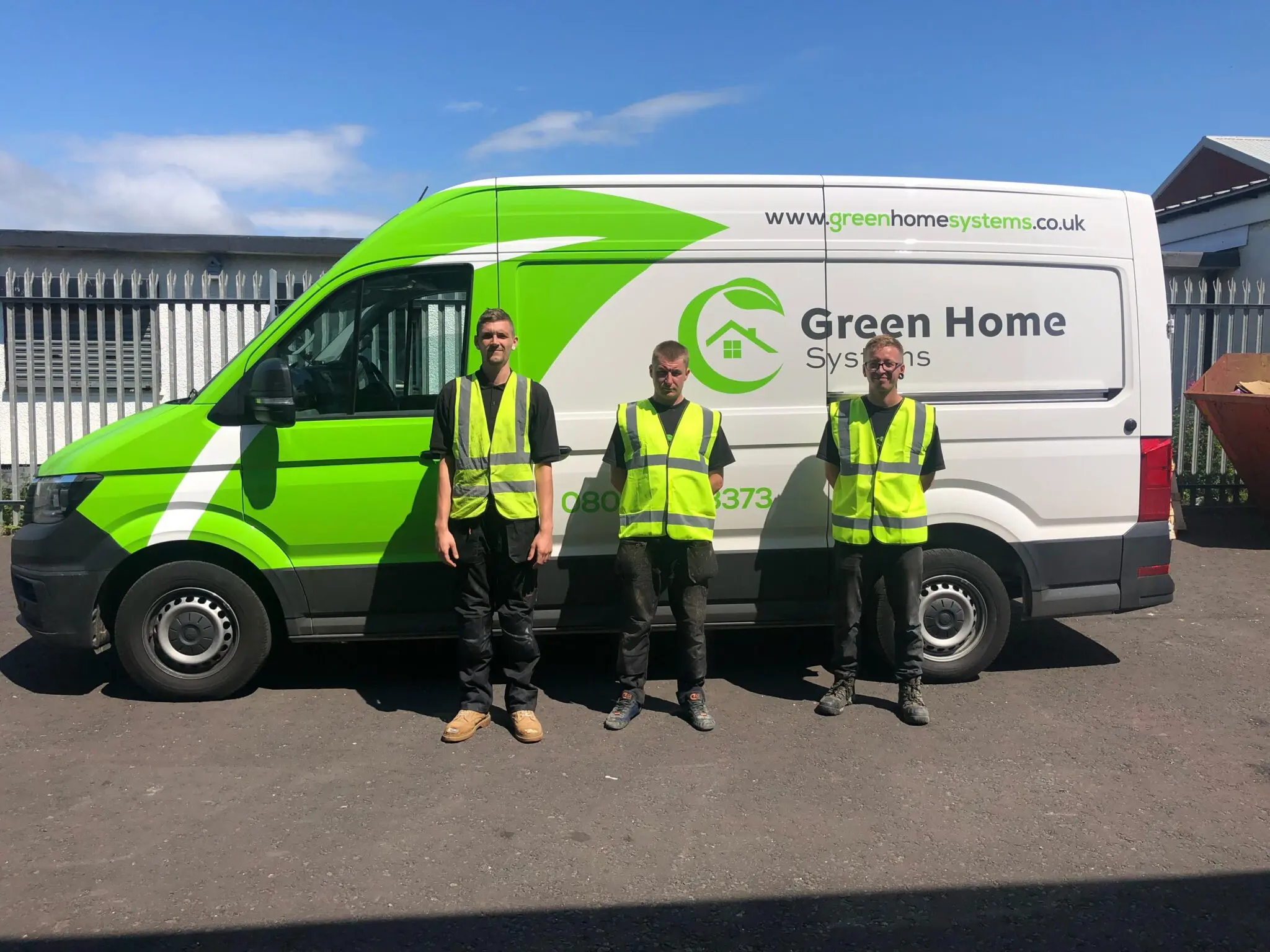
What is external wall insulation?
External wall insulation is normally used to insulate solid wall properties and the surface is a protective render with decorative finish that improves the building’s appearance.
This should only be managed by a professional installer as it is a highly specialised insulation measure.
Depending on your location, planning permission may be required, and it is important that your home is properly assessed before external wall insulation is installed to ensure the correct materials are used and to prevent installation issues such as condensation.
Our accredited insulation team
Green Home Systems offer high quality insulation installation for both commercial and residential properties.
We are proud to be awarded the PAS2030 accreditation, the highest industry standard available to contractors.
Providing our customers with the highest workmanship, giving you peace of mind, our cutting-edge insulation services will help you make your home more eco-friendly, and save you money.

How we insulate your home
Why insulate your home?

Funding for external wall Insulation
The Great British Insulation Scheme is a government run funding program, designed to help property owners like you receive free, or more affordable insulation to reduce your energy bills.
We create warm, healthy, and happy homes.
Our record speaks for itself:
Not sure which type of insulation is right for your home?
Read more about the range of insulation services available from Green Home Systems or simply get in touch with our experts for personalised advice.
Loft insulation is a smart way to cut your carbon footprint and make your home more energy-efficient. Many households across Scotland still lack proper loft insulation, making their homes less comfortable and more expensive to heat.
With Green Home Systems, you can easily upgrade your loft insulation with modern materials like mineral wool or recycled options, using simple methods such as dry-fit panels or laying blanket rolls.
Before you start, it’s important to understand how loft insulation works: it acts as a barrier to trap warmth inside during winter and keep excess heat out during summer. Different materials have different R-values (their ability to resist heat flow), so knowing what material suits your home best is key.
Cavity wall insulation has become increasingly popular as homeowners look for ways to reduce their carbon footprint and energy costs.
The first step is to drill small holes into your home's external walls and inject insulation material into the cavity. The process must be carried out carefully to ensure the cavity is fully filled and properly packed, avoiding cold spots or heat loss.
The type of insulation used depends on your home’s construction and age. Different types of cavity wall insulation have unique lifespans and benefits, so it's important to work with an experienced installer to find the right fit for your property.
Internal wall insulation is fitted between the inner and outer walls of your home. It’s a fantastic way to reduce heating and cooling costs, especially in older properties across Scotland where internal temperatures can vary significantly during colder months.
At Green Home Systems, we use a specially designed foam that fills all gaps and stops moisture penetration, while also providing extra structural strength through advanced additives. The lightweight formula means you get all the insulating power without burdening your home’s walls.
If you're serious about making your home cosier and more efficient, internal wall insulation is an excellent option to consider.
Room-in-roof insulation transforms your attic or loft into a usable, comfortable space while dramatically improving your home’s energy efficiency. Materials like fibreglass, rock wool, or rigid boards are fitted between the rafters to stop heat from escaping.
Proper room-in-roof insulation can prevent heat loss during Scotland’s cold winters and help maintain a steady temperature year-round. Whether you're creating a home office, bedroom, or just want a warmer loft, this type of insulation is key.
Before you start a DIY project, it’s important to get a full understanding of the right approach. Poor installation can lead to serious risks, including fire hazards or structural damage. At Green Home Systems, our professional and experienced installers ensure your room-in-roof insulation is fitted to the highest standards, giving you lasting energy savings, greater comfort, and complete peace of mind.
External wall insulation FAQs
When insulating your home, you can choose from many types of property insulation.
To choose the best type for your home, you must first determine where in your home you need insulation, your property type, and age.
For example:
-
Solid wall homes often benefit from external or internal wall insulation.
-
Cavity wall homes can be insulated by filling the gap between walls.
-
Loft insulation is great for most properties and helps retain heat.
-
Floor insulation suits older homes with suspended timber floors.
Generally, homes built after 1920 are likely to have cavity walls. Older homes tend to have solid walls. A professional survey will confirm this and help decide the best insulation approach.
Yes! External wall insulation improves thermal performance, reduces heat loss, and also protects your walls from rain and wind—great for Scotland’s variable weather.
Yes, but it needs a sensitive approach. Internal wall insulation is often used, and we ensure compliance with building regulations and conservation guidelines.
Insulating your home can cut energy bills by up to 40%, depending on the improvements made and your current setup.
Yes, schemes like Home Energy Scotland Grants or ECO4 can help cover or reduce insulation costs. We’ll guide you through the eligibility and application process.
Yes! Improved energy efficiency can raise your home’s EPC rating, making it more attractive to buyers and reducing long-term energy costs.


